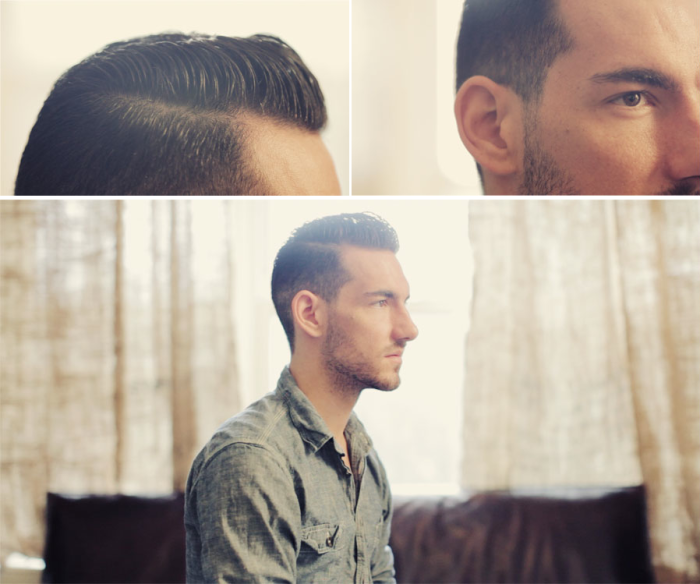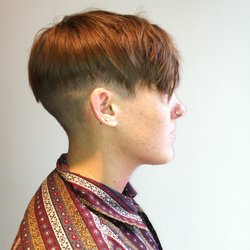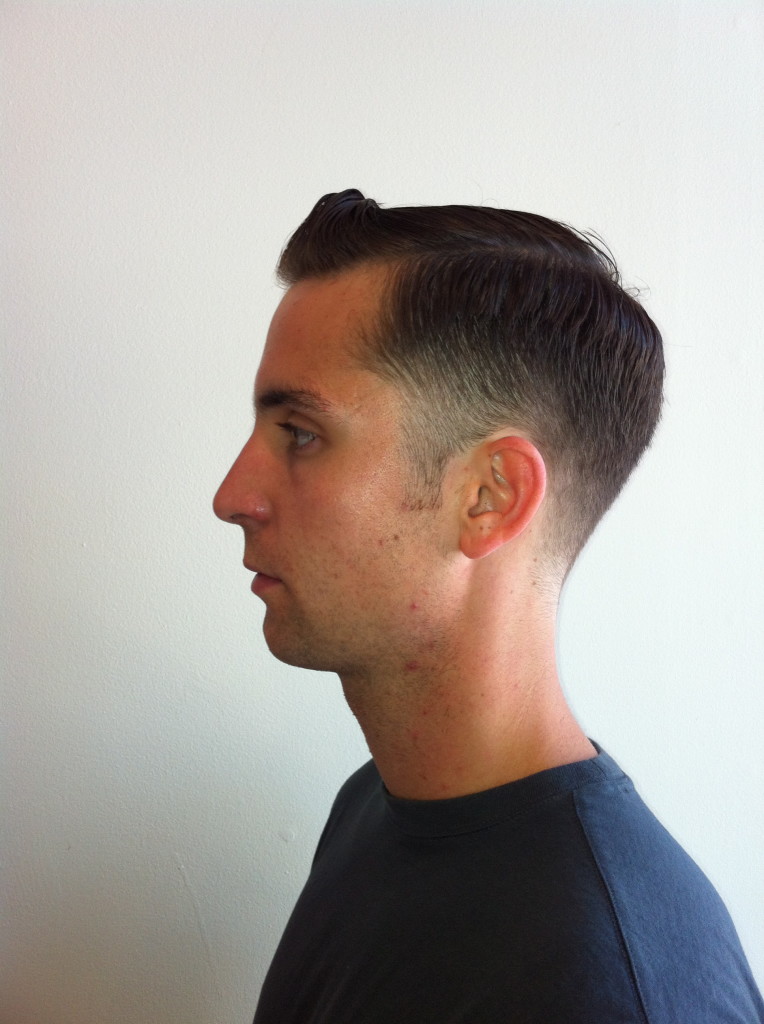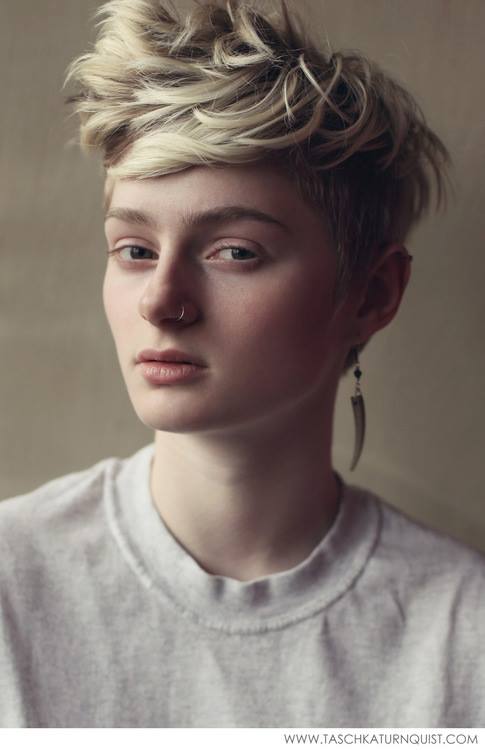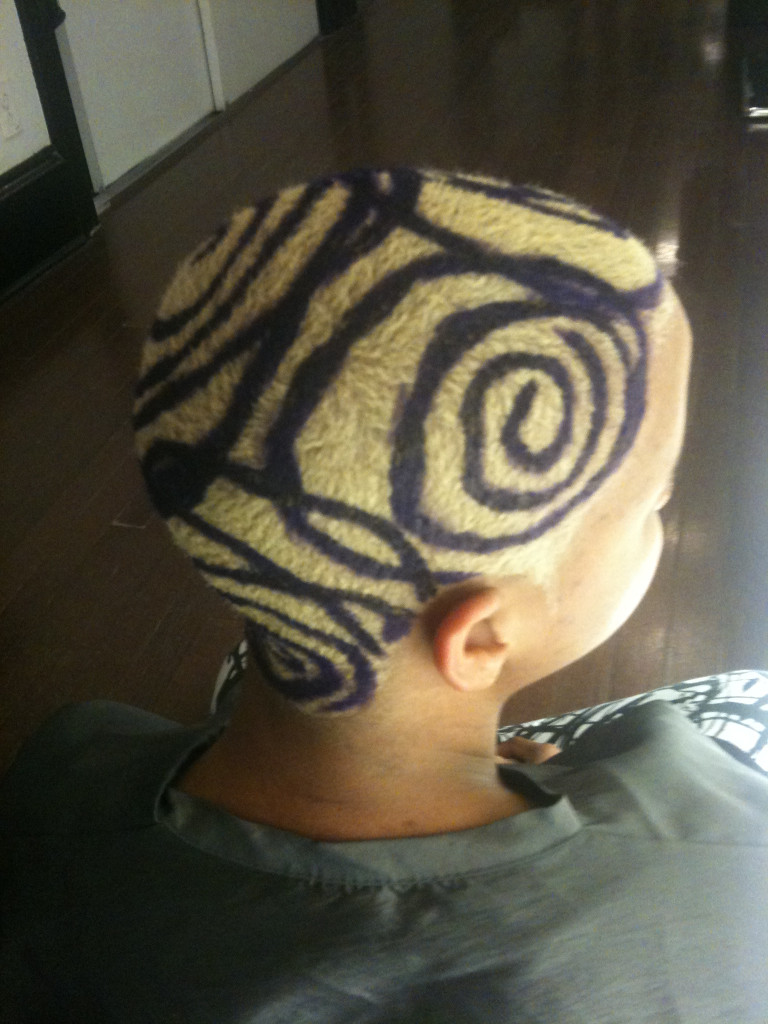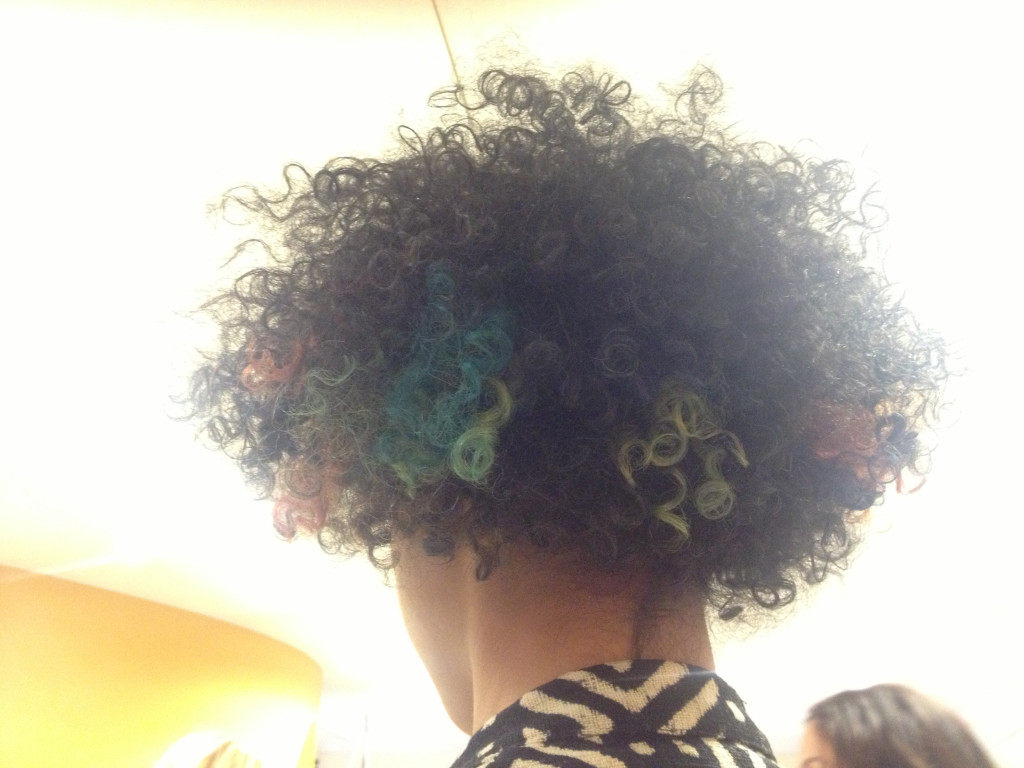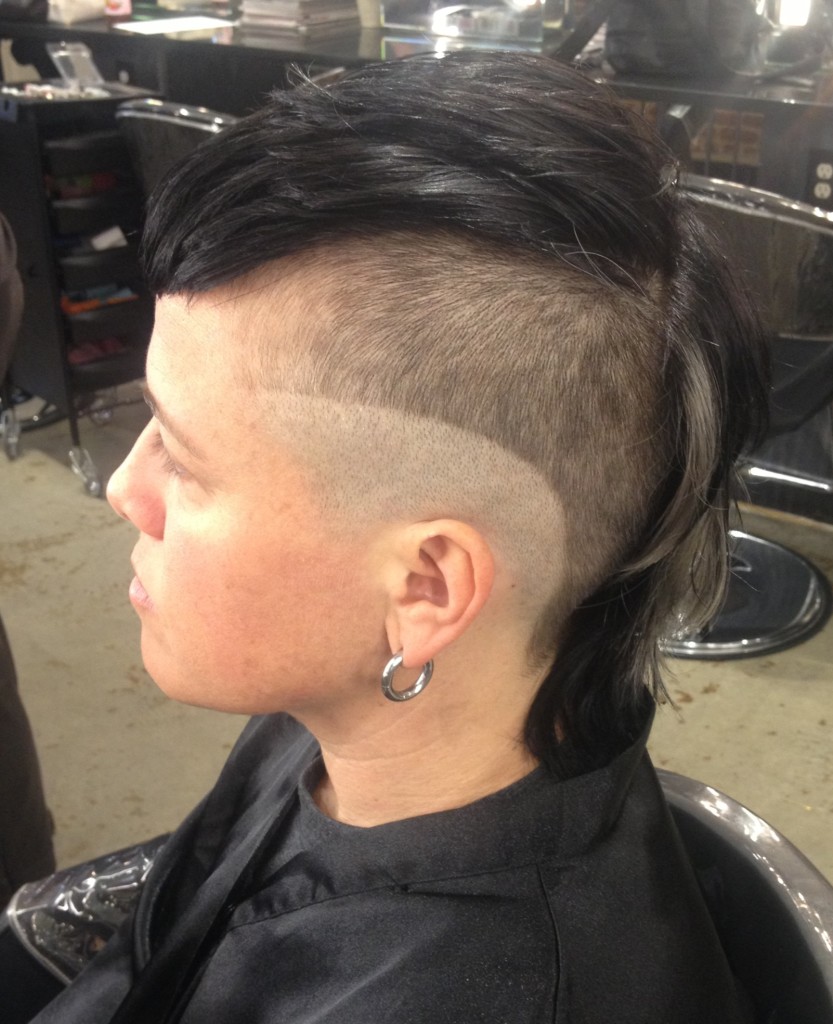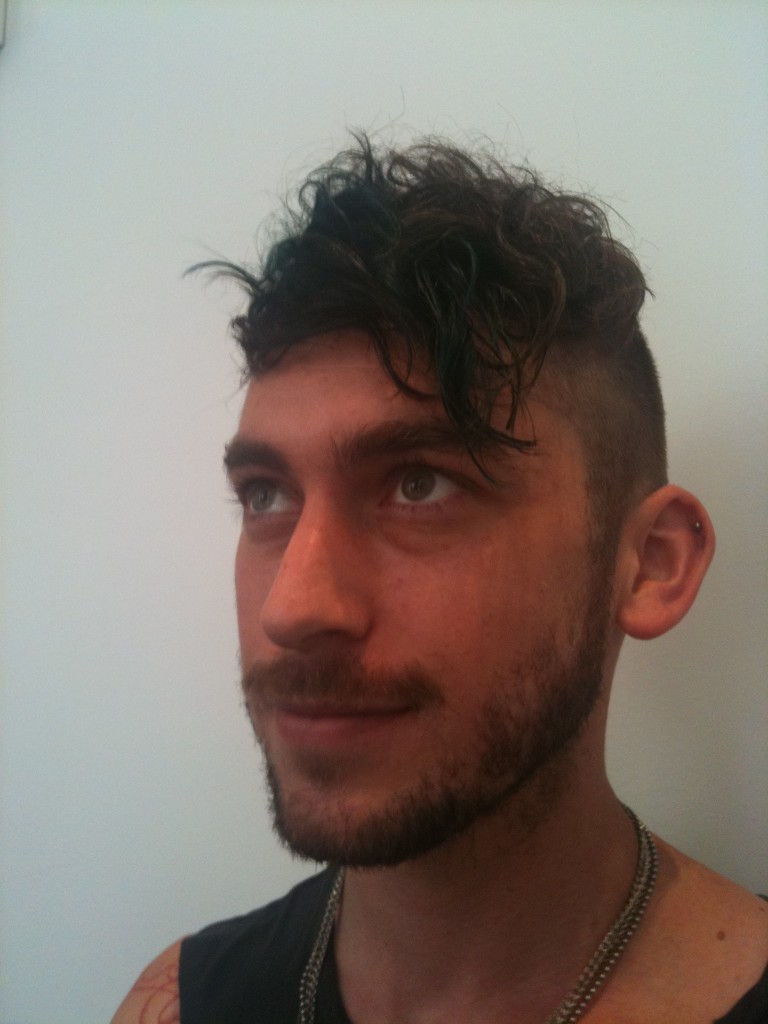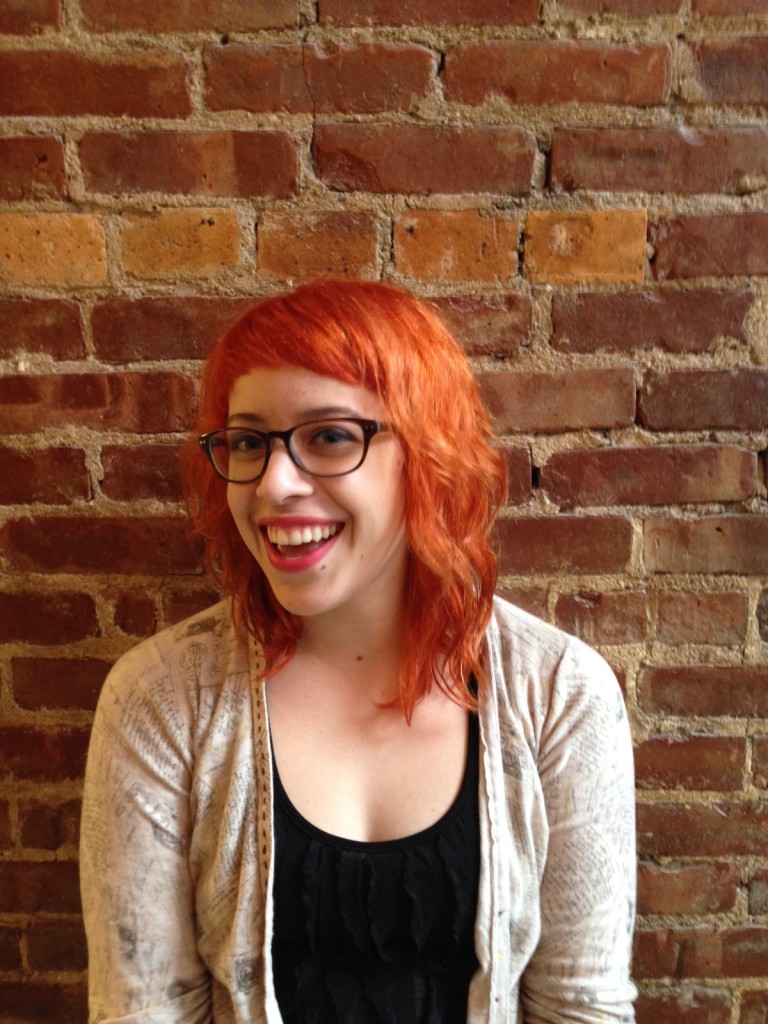Author | Christiane Nickel | Fashion Editor
Haircuts and styles are inherent to the cultural vestiges of queer identity. I remember first coming out with inaugural chopping off of my dirty blond shoulder-length mane, which looked like an early ‘90s mess before this era was ever deemed ironic. That and my newly acquired “dykey” swagger – which looked more like John Wayne with a hemorrhoid than any sort of Shane-inspired swagger – I was trying to attain lasted all of two months. Following that failed exercise in baby dykedom I happily grew out my disastrous coif for some varying degree of a bob and retired to my lame leggings, sequined skirts, and diaphanous sheaths.
When I moved back from Germany short of a year ago I was confronted with a similar issue only this time (much to my ignorance) I felt like my hair wasn’t long enough. Endless tendrils of glistening black hair and a sexy dishabille of serpentine curls seemed to become the femme de rigeur at many a queer establishment. My razor cut Garconne-style hair seemed too European (or at least that’s how it was regarded).
Like a mandala, hair and personal style are their own evolutionary processes that have practically become nucleic to queer aesthetics. The unique cross cultural history of hair as a matrix that exists within and without the fashion system as a signifier and the signified makes this an all too relevant topic not to explore.
In my effort to better understand hair in the realm of queer culture I surveyed a breadth of stylists and salons that specifically cater to a queer clientele hear their insights…
Tomcats
My first stop was the Green point-based barber shop Tomcats. Recommended to me by a slew of various individuals Tomcats has become a favorite known for their crisp barber cuts, relaxed setting, and the complimentary PBR with every cut. Three years ago co-Owner and barber Joey Covington opened Tomcats in the hopes of cultivating more creative styles in an open environment. Upon realizing that his existing GLBTQ clientele might feel uncomfortable with predominantly male masculine-Rockabilly team, Covington started placing ads on queer/lesbian bondage sites. “Our neighborhood includes everyone,” Covington remarks.
As a Portland, Oregon native, I was interested in regional stylistic differences, to which Covington notes, “hair here is much more conservative, styles on the West Coast tend to be more rogue whereas here I do 15 of the same haircut.”
When asked about some current hair trends, Covington regards the “Boardwalk Empire” style typical of WWI and WWII as a popular one currently. That means hair is shaved to the skin on the sides and then at least 4” long at the top and can easily be sculpted into a pompadour. Other popular styles include Mod haircuts inspired from the early ‘60s rocker haircuts.
Next stop…
Badlands
Badlands is based in Park Slope, Brooklyn has become a noteworthy favorite amongst the queer community. Founder and stylist Deirdre Novella seeks to create high-end women’s hairstyling with high-end men’s barberry encompassing of all genders. Openly queer and with a predominantly queer staff as well, Novella was looking for a space where queer people can come in and feel safe, supported and inspired. “I just wanted to have fun in a comfortable atmosphere that was professional yet edgy,” a philosophy which Novella has aspired and succeeded into since its opening three years ago.
Novella has expanded the stylistic horizons by using clippers, which can only be found in barbershops. When I asked her what specific trends or styles she finds popular amongst her queer clientele she lists, buzz cuts, Boardwalk Empire style updated military cuts, bobs and bi-levels (shaved on one side and longer on the other).
In my quest to continue to understand the breadth of all that is hair and queer culture I had the enlightening opportunity to speak to two openly queer stylists Liz Wright of Muze Salon and Bronwyn Karle.
1. In your experience as a stylist what would you define as (or is there such a thing) a queer hair cut?
LW: In my opinion this is a bit tricky to answer. There are definitely haircuts that are much more prevalent within the queer community. I’m sure we’ve all seen one variation or another of the “Top 10 Queer Haircuts” and a quick search on Tumbler or Pinterest will yield oodles of content for queer hair. That said, I believe it’s more of an aesthetic within our community as opposed to specific haircuts. I love being out and about in the queer scene because I tend to see what I consider a lot of “good hair” and gain a lot of inspiration from our community.
BK: When I think of queer haircuts I envision a broad range of styles that span from very versatile, androgynous, low-maintenance short and medium length cuts all the way to every fantasy shade of over-the-top, highly styled masterpieces. I don’t know if there are queer haircuts or if it’s more about the person (of any kind) wearing a style that makes it particularly queer but whatever you’re granting the knighthood of calling a queer haircut is probably something that is strong, architecturally creative, structurally interesting and fun to look at.
2. How would you define queer style in terms of hair and how has it changed over time?
LW: Queer style fascinates me. I find a lot of my queer clients want something edgier, quirkier, and more individualized. There’s a sense of braveness and non-conformity that tends to be diffused throughout our style which also translates into hair. Oftentimes gender and what society tells us that should look like comes into play with a style someone wants to create. I have clients looking to intentionally fuck with those norms for one reason or another. It’s not uncommon for clients to tell me their stylist makes them look too girly, won’t cut their hair short enough, looks at them with a blank stare when they say they need their hair to be more queer/gay/glittery/dykey/faggy/drag/high femme. There are definitely descriptors common within our culture that wouldn’t necessarily make sense to people outside our community. As far as how queer style has changed I think the internet has done a good deal to broaden visibility for our community, perhaps allowing us to be more comfortable with who we are? I see more people now than ever treating their hair as an actual expression of their queerness, so to speak, almost as an accessory of sorts.
BK: Queer hairstyles generally fall into the ‘creative cut’ category of hairdressing. These are basically combinations of traditional haircutting techniques that “break the rules” in some way to customize a look. Queer hairstyles tend to break these rules much more frequently, in extremes and tend to evolve synonymously with queer fashion; with functionality and elegance being key themes. Queer people are continuously creating more and more ways of making beautiful things wearable. As we develop it becomes less unusual to express ourselves loudly. Queer style is loud and each person’s way of decorating himself or herself tells a different story. I think these expressions of ourselves have changed and are changing because we are becoming more of an individualized culture that looks more towards maximizing our own uniqueness rather than trend-chasing. I believe queer styles are like queer people, in that, being queer is not the most interesting characteristic about them.
3. Who are some of your style muses?
LW: I have style muses everywhere. I look to hairstylists around the globe to keep me fresh and filled with new ideas. Some of my favorite muses are the people walking the streets of New York and dancing at the queer parties. Just last night I saw the most amazing bowl cut and now I’m on the hunt to find someone’s hair to chop some of that inspiration into!
BK: Crust punks, most dykes, pretty people with poor hygiene, Julian Dys, Brigid Nastasia, and my beta fish, Scott.
4. What are your aspirations as a stylist?
BK: I aspire to forever push myself creatively and inspire others to take greater risks at achieving themselves.
LW: I always aspire to show my clients the beauty I see in each and every one of them. I know it sounds cheesy as hell but it’s true. I’ve been looking into creating some sort of queer hair pop-up shop or drop in spot to give bangin’ cuts at lower rates. I’ve also been chatting with friends lately about doing hair house parties focusing on our community. Little house parties and everyone leaves with good hair! And then there’s the little dream I have all the time about breaking down the gender binary that so strongly exists in my industry. I’m on a mission to make it short/medium/long hair as opposed to only mens’/womens’ hair!! I could go on forever. This brain is constantly finding things to do…
Bronwyn


Liz Wright

